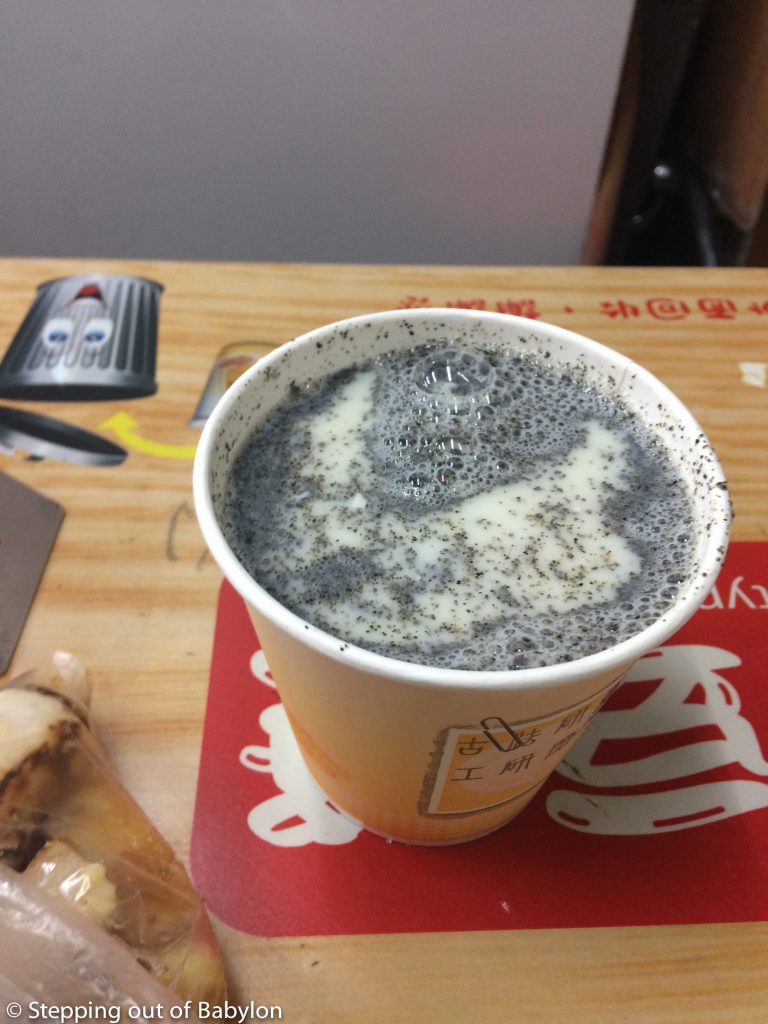The Taiwanese breakfast—apart from a few meat items that I skipped—consists mostly of eggs and fried foods. Sometimes it’s not easy to figure out the names of the different dishes, as they’re often only written in Mandarin. Even when there’s a menu with Latin characters, the names can vary from place to place. What helped me the most were the pictures that often illustrate the menus.
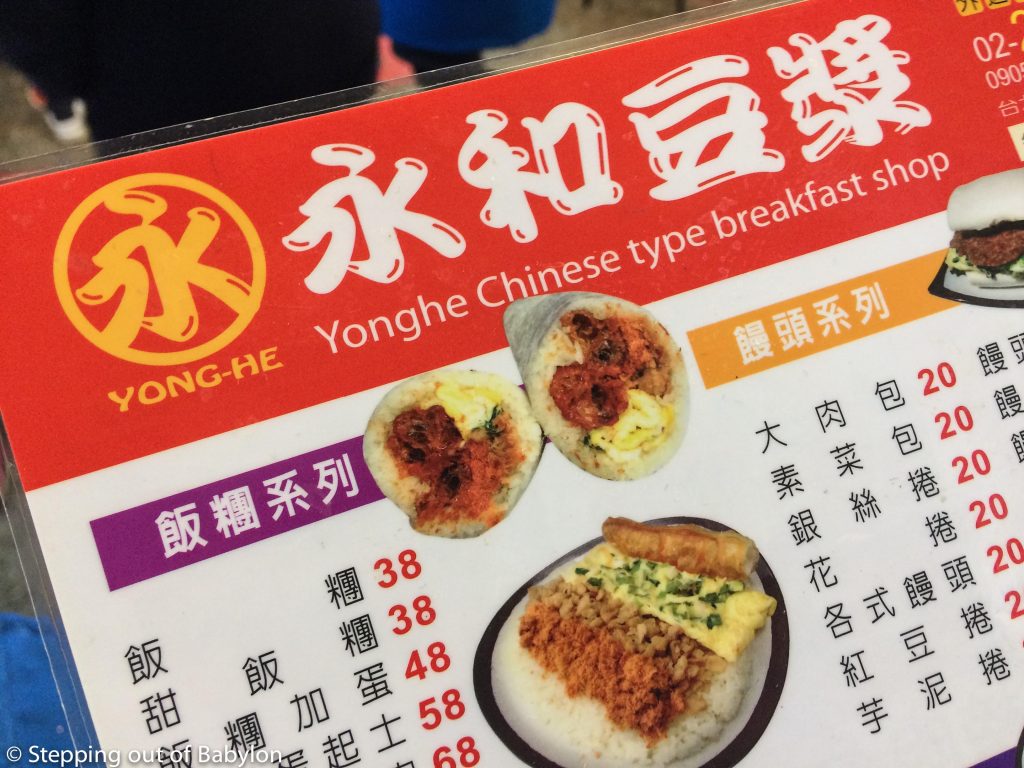
Here’s a summary of my breakfast experience in Taipei, mainly from the Yong He Soy Milk, shop; which seems to be a local institution and a go-to spot for cheap, traditional Taiwanese food.
Below are some of the most popular breakfast items that are vegetarian-friendly (or at least “edible” for vegetarians):
Pancake (蛋餅 – Dàn Bǐng)
This Taiwanese version is a bit different from what we usually call a pancake. It’s somewhere between an omelet and a pancake — made with eggs, rice flour, and scallions, and fried in plenty of oil. The result is a delicious but heavy dish. Sometimes it has a green color, though the taste is the same as the plain version. The texture and crunchiness can vary depending on where you get it. It was my favorite breakfast item — and I later discovered it’s also available at night markets!
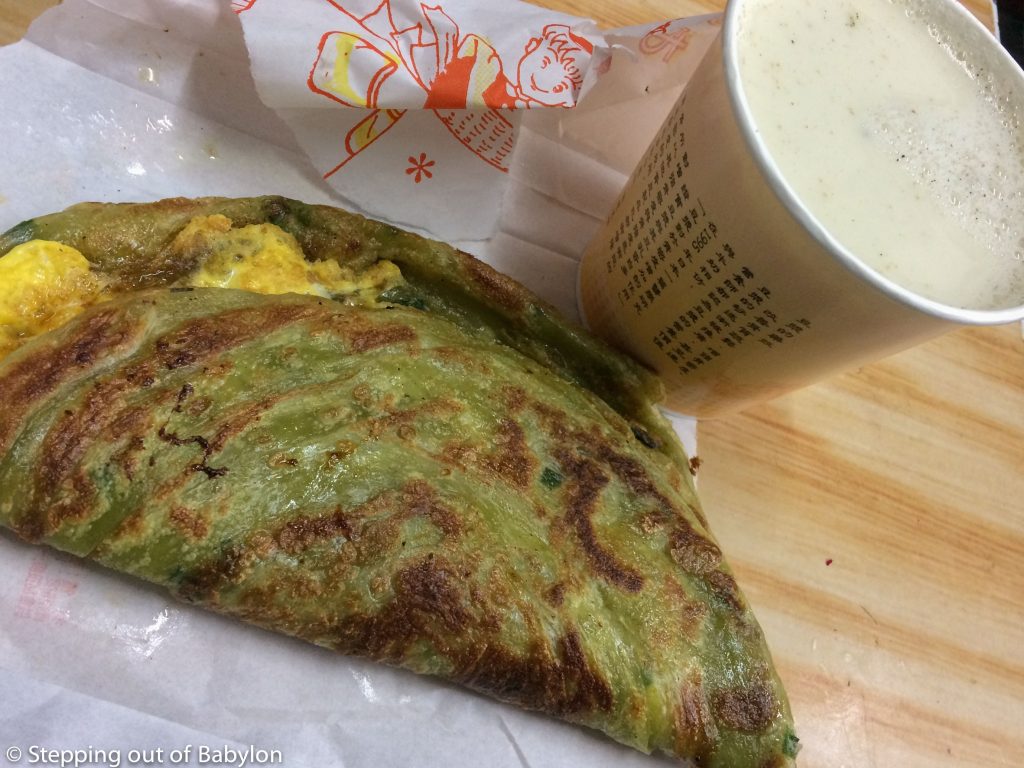
You Tiao (油條)
Deep-fried twin sticks also found in Thailand and other Southeast Asian countries. They’re one of the most popular and widely available options. When freshly made, they’re slightly crispy and irresistibly tasty. Despite their light appearance, they’re quite filling due to the oil — and yes, they leave your fingers greasy. Some locals like to dip them in hot soy milk.

Luo Bo Gao (蘿蔔糕 – Turnip Cake)
Made with rice flour and white radish, this has a soft, jelly-like texture and a very mild flavor. It’s usually cut into small squares and pan-fried. A splash of soy sauce can enhance it. Sometimes it’s fried with egg — not very visually appealing, but a good source of protein and carbs.
Chinese Omelet
A simple omelet with scallions and onions, sometimes wrapped in a layer of rice dough, then fried (of course) and roughly chopped. It doesn’t look great but can be filling.
Dumplings and Buns
Very common in Chinese cuisine — most are meat-filled, but some places offer leek or cabbage versions. These shops are easy to spot thanks to the tall stacks of bamboo steamers out front, with steam pouring out.
Pao (包子 – Steamed Bread)
Another Chinese influence — this is steamed bread made from rice flour, with a neutral taste and spongy texture. It’s often eaten with an omelet like a sandwich. Not my favorite because of the texture, but worth trying once.
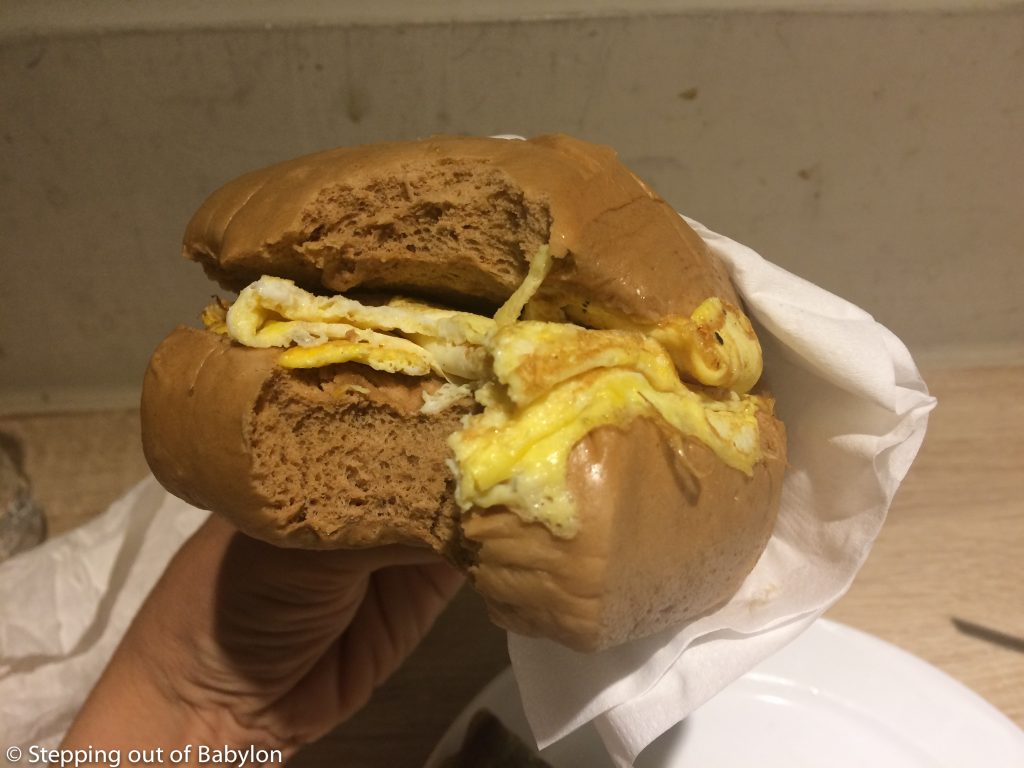
Shaobing (燒餅)
One of the rare non-fried options! These are baked, wheat-based flatbreads that can be sweet (often filled with bean paste) or savory (usually with meat). I loved the texture and appreciated the break from fried food.
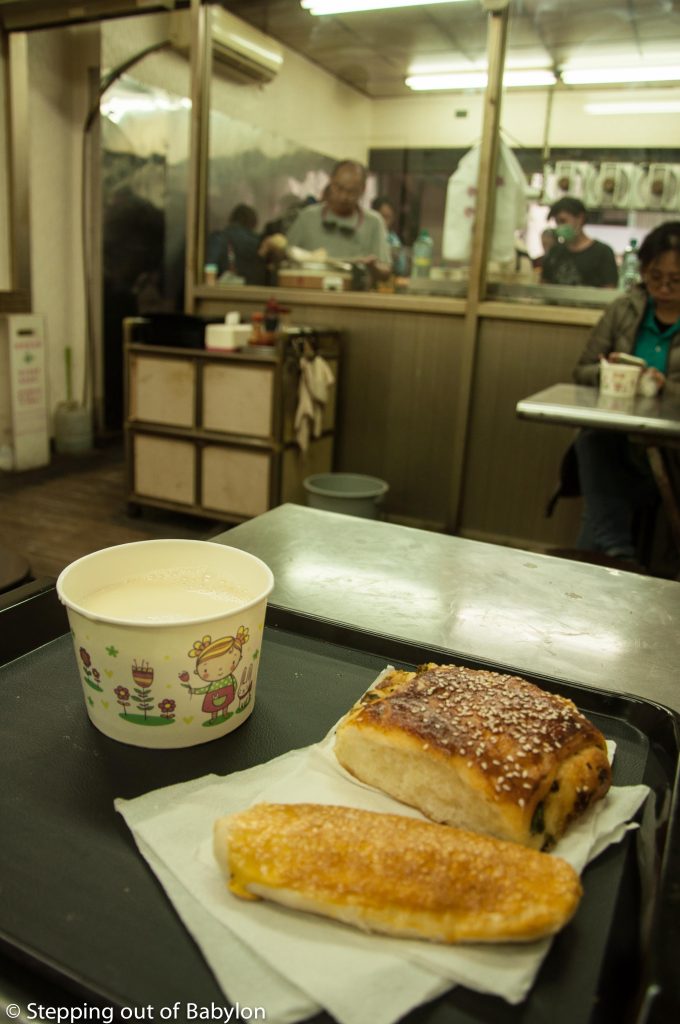
Fan Tuan (飯糰)
Sticky rice rolls filled with You Tiao, pickles, and meat. Vegetarian versions are hard to find unless you speak some Mandarin!
… and don’t forget the Soy Milk
To wash it all down, soy milk is the most common drink — served hot or cold. At Yong He Soy Milk, you can also try a variation made with black sesame and ground peanuts, which gives it a darker color and thicker texture. Both versions are sweetened and perfect for the chilly winter weather.
